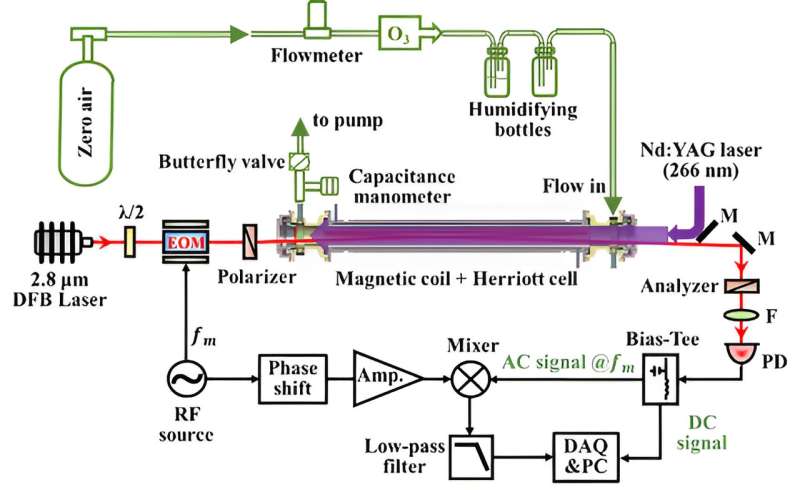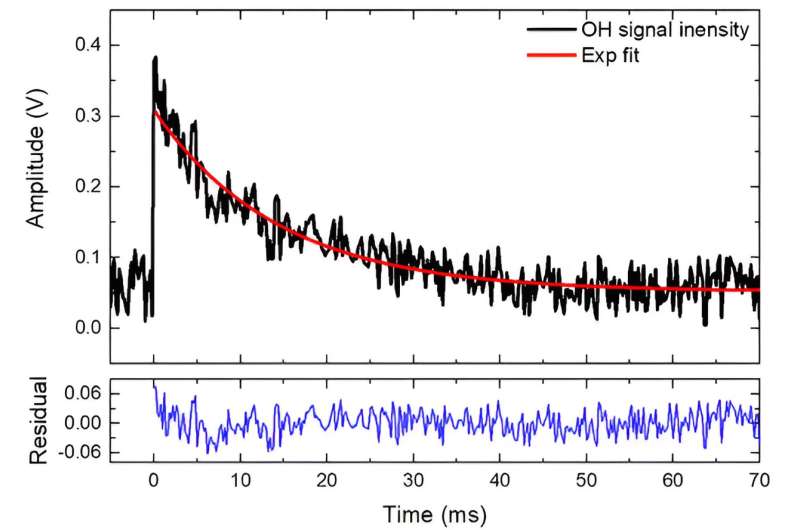Schematic of the frequency-modulated Faraday rotational spectrometer setup. Credit: Cheng Feihu
Researchers led by Prof. Zhang Weijun from the Hefei Institutes of Physical Science of the Chinese Academy of Sciences have proposed a feasible approach for the rapid detection of hydroxyl radicals.
Based on this technology, a new device called Frequency-modulated Faraday Rotation (FM-FRS) spectrometer has been developed, which can detect OH radicals with high precision. The study was published in Optics Express.
Hydroxyl (OH) radicals are important active oxidants in the atmosphere and are important reaction chain initiators in the oxidation of most compounds. In order to study their reaction processes and mechanisms in detail, they must be measured directly in "real time," i.e., to study them on the time scale of their actual existence. Therefore, detection techniques must be able to respond to rapid changes in the concentration and lifetime of OH radicals.
To address this problem, the researchers developed the FM-FRS spectrometer for highly sensitive and rapid measurement of OH radicals, which was characterized by wide measurement bandwidth, high sensitivity, and good selectivity, and is particularly suitable for kinetic studies of short-lived intermediate radicals.
"We used a special laser beam that is modulated at a very high frequency, up to 150 million times per second," said Cheng Feihu, a member of the team.
Concentration-time profile of OH radical obtained after averaging three pulses at a 200 μs sampling interval. Credit: Cheng Feihu
The researchers used the spectroscopic technique to measure the time-resolved spectral signal of the OH radical near 2.8 μm. The detection limit for OH reached 6.8×108 molecules/cm3 (1σ, 0.2 ms) after three pulse averaging, and decreased to 8.0×107 molecules/cm3 after 100 event integrations, which was in general agreement with the trend of the system performance in the white noise limit.
This work provides a new and alternative tool for studying radical dynamics, not only for OH radicals, but also for other paramagnetic transient molecules.
More information: Feihu Cheng et al, High band-width mid-infrared frequency-modulated Faraday rotation spectrometer for time resolved measurement of the OH radical, Optics Express (2023). DOI: 10.1364/OE.493270
Journal information: Optics Express
Provided by Chinese Academy of Sciences

























